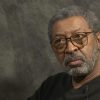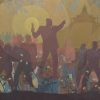As the video of a South Carolina sheriff’s deputy brutally body slamming an unarmed black girl goes viral, the public space is spewing outrage with all the force of an exploding volcano. Yet this is not an isolated incident, it was simply a longstanding practice caught on film, suddenly trapped in the permanence of fastidious Internet record keeping that won’t go away.
Beyond the anger of the moment and the temporary Twitter rage, the larger issue hangs there because, let’s face it, we’ve known for some time that black youth are routinely shipped off to crowded prisons masquerading as public schools. “School resource officers,” as they are softly termed, have become conveniently placed correctional staff prepping the “colored” kids for prison. Gratuitous violence unleashed on black kids is the norm in American schools.
“The use of school resource officers goes back some 20 to 25 years ago,” National Urban League President and former New Orleans Mayor Marc Morial explained to The Daily Beast. “Back then, the focus was just on troubled schools dealing with gang violence and drugs.”
“But, now you’re seeing them placed everywhere, even in schools where there is no history or pattern of violence,” argues Morial. “It’s gone way too far. We shouldn’t have to turn schools into armed camps.”
For Morial and others, school resource officers are at the very tip of that problem, which is a “zero tolerance” approach run amok, with black students getting the worst of it. As the ACLU notes, “policies criminalize minor infractions of school rules, while cops in schools lead to students being criminalized for behavior that should be handled inside the school.”
African-American students are just 18 percent of the public school population, but, as this New York Times investigation sorted out, they’ve become 35 percent of those suspended, nearly 40 percent of those expelled. In total, “70 percent of students involved in arrests or referrals to court are black or Hispanic.” Patience is in such short supply for black students, even when they’re pre-school age: they make up 18 percent of pre-schoolers, but half of “out-of-school suspensions,” according to data from a 2014 Department of Education study (PDF). As a 2008 University of Pittsburgh study revealed, young black male 10th-graders are 30 percent more likely to end up in the dean’s office than their white male peers—and 330 percent more likely to be suspended.
And, as Biddle tells the Beast, there’s really no evidence cops in a school setting improve safety or academics. He points to a 2011 University of Maryland study (PDF) showing scant proof of diminished violence or misbehavior due to school resource officers walking the halls. But what it does show is that school cops actually trigger an increase in the percentage of kids referred to law enforcement, which—of course—leads to disproportionate assaults of black children by law enforcement.
Over-policed schools are the ugly secret of a crumbling and comfortably unequal educational system, the widely ignored one-way-ticket-to-prison pipeline we don’t talk about. It is at the core of a K-12 crisis presidential candidates barely mention while clowning each other on debate stages—one now has-been contender, Gov. Scott Walker, probably didn’t want it getting out that 34 percent of all black students in his wonderful state were getting suspended in one year. And despite all sorts of bi-partisan campfire songs on criminal justice reform, it’s awfully strange this won’t come up as a top priority.
And yet, it should. As Stanford University researchers recently pointed out, “implicit bias” is really a thing, teachers and staff more likely to mete out harsher punishments for black students than their white peers. It’s not just white teachers, either: Even many black teachers find themselves caught up in it, putting new lyric and meaning to KRS-One’s catchy “Black Cop” classic.
“The only credible explanation for a police officer brutalizing a young black girl like that is a fundamental and societal disregard for the humanity of black people,” Dayvon Love, director of policy research for Baltimore-based Leaders of a Beautiful Struggle, explained to The Daily Beast.
Love is on to something: A 2014 survey showed a majority of whites perceiving blacks, especially African-American youth, as “superhuman” and impervious to pain. “Superhumanization of blacks might also explain why people consider black juveniles to be more ‘adult’ than white juveniles when judging culpability,” the survey’s authors wrote.
There’s a not-so-distant chattel slavery cadence to all this, institutions unwilling to unplug from a 400-year-old practice.
“It’s the disastrous collision of two practices that are out of control, police brutality and school discipline,” argues Peter Groff, a national education expert, former Colorado Senate president, and a former Obama administration appointee. “The number of African-Americans being suspended and or expelled is frightening and when you mix in ‘resource officers’ that can result in dangerous and rather lethal consequences if not checked soon.”
Groff, who sits on the advisory board for Pathways in Education, an California-based dropout prevention and recovery program, argues that over-policed schools also exacerbate stubbornly high national dropout and chronic absenteeism rates.














